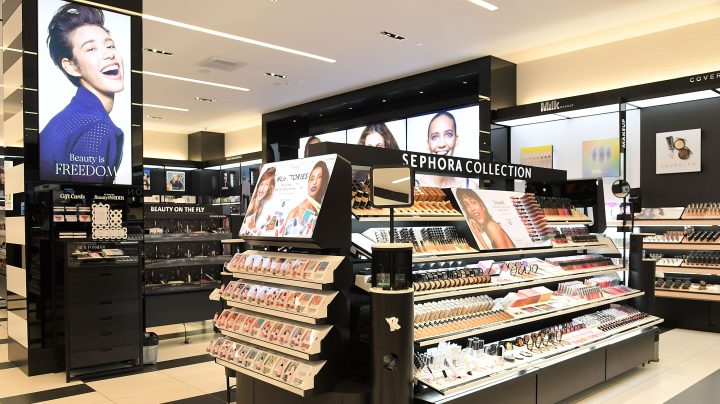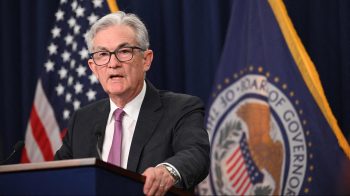
No matter the economy, beauty sells
Share Now on:
No matter the economy, beauty sells

Stubborn inflation and the threat of a recession may lead some shoppers to cut back on nonessential items, but that doesn’t apply to their favorite mascara or face mask.
During their latest corporate earnings calls, Kohl’s and Target executives said despite losing ground in areas like apparel and home goods, beauty remains a bright spot. And earlier this month, Ulta Beauty, a retail chain that carries makeup brands from Dior to L’Oréal, announced that its 2022 revenue rose 18.3% to $10.2 billion, and net income ticked up to $1.2 billion from the year prior — a record for the 33-year-old company. (Many Target stores house Ulta Beauty shops, while Kohl’s partners with competitor Sephora).
The drive to feel and look good — and to enjoy a little luxury at a lower price point than a spa treatment or a vacation — propels shoppers to keep spending on beauty products even when they’re shelling out more money on food and other essential items, and facing down a potential recession. This is part of a well-known pattern of behavior called the lipstick effect.
“As consumer sentiment declines, sales of lipstick rise because consumers, when they’re feeling down, look for a pick me up,” said Larissa Jensen, vice president and beauty industry advisor at Circana, formerly NPD and IRI, a retail market research and analytics company.
Jensen points out that these days, however, it’s not only lipstick.
On a recent Thursday evening, a constant stream of shoppers tested lip glosses on the back of their hands, compared bottles of perfume and perused pots of blush in a bustling Sephora in Brooklyn, New York. Ellie Martinez, 35, a hair stylist, purchased gifts for friends from rival retailer Glossier before heading into Sephora for a new concealer for herself. She said she averages about $200 a month on products and doesn’t think she’ll curb the habit even in an economic downturn.
“I feel like skin care is important,” she said, adding that presenting herself well is a priority. “I think when you find something that works, you’re just going to keep buying it.”
Revenue for high-end beauty brands in the U.S. grew in 2022, rising 15% year over year and reaching over $27 billion, according to Circana.
“Beauty had a tremendous year,” said Jensen, who sees signs of continued strength into 2023. “It was not just a one-time thing.”
Experts say that people, young and old and across all income levels, are purchasing beauty products. And for many, the desire to look a certain way, both from a self-care perspective and a societal one, trumps fears of economic precarity.
“The consumer wants to continue to look and feel good,” said Natalie Kotlyar, the national leader of the retail group at BDO USA, an accounting and advisory firm. “Society today and consumers today are very much into self-care.”
Consumers also have a more expansive selection of products, which is also contributing to the recent surge in beauty buying.
“Over the last several decades, that view of beauty has migrated into more of a health-oriented, more sophisticated array of products involving, quote-unquote, skincare,” said Mark A. Cohen, the director of retail studies and adjunct professor at Columbia Business School. “Along with skincare goes wellness regimens involving diet, supplements and treatments.”
Spending on wellness products and services in the U.S. is estimated to be more than $450 billion and is increasing 5% annually, according to 2022 research conducted by the consulting firm McKinsey.
In addition to more products, shoppers are also no longer limited to drug and department store makeup. Instead, they can buy and discover items like face oils, high-end dandruff shampoo and collagen supplements on social media and online.
Beauty’s increased online presence coupled with the pandemic led more people to lean into self-care in the last few years.
“During the pandemic, many people had more time on their hands or were working from home,” said Kotlyar. “People developed these bigger routines. . . . with many more products.”
With people back to work in an office or constantly having to be on Zoom calls, shoppers are continuing their self-care rituals while adding more makeup and hair care back into their routines.
If the economy does dip into some sort of downturn, some consumers may swap out their $75 hyaluronic acid serum for a $10 more budget-friendly option. But experts think shoppers won’t give up their beloved products completely. Jensen said that a September 2022 Circana survey found that 70% of respondents, who were already paring back spending in parts of their budget due to inflation, said they wouldn’t cut down on beauty.
“Beauty is an emotional category,” she said. “It brings joy, which is a universal aspiration. And as a result, we do anticipate that we will have a strong year in 2023.”
There’s a lot happening in the world. Through it all, Marketplace is here for you.
You rely on Marketplace to break down the world’s events and tell you how it affects you in a fact-based, approachable way. We rely on your financial support to keep making that possible.
Your donation today powers the independent journalism that you rely on. For just $5/month, you can help sustain Marketplace so we can keep reporting on the things that matter to you.


















